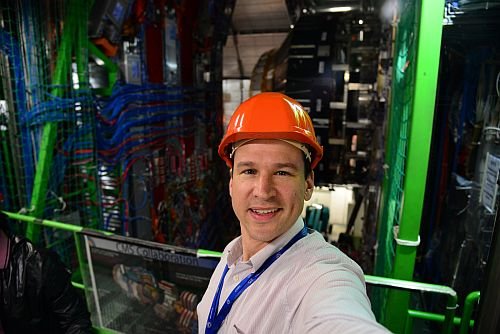7 March 2014
Australian researchers may soon be able to examine the intimate details of chemical reactions and biological processes by collecting information billions of times faster than the blink of an eye.
Dr Mark Boland from the Australian Synchrotron plans to use a prestigious overseas scholarship to enable Australian scientists to measure samples at the Australian Synchrotron hundreds of billions of times a second, around a thousand times faster than is currently possible. He received a Fulbright Professional Scholarship in Nuclear Science and Technology at a presentation dinner in Brisbane on 6 March 2014.
Mark is the Australian Synchrotron’s Principal Accelerator Physicist. He is also an Honorary Senior Fellow at the School of Physics at the University of Melbourne, and a member of the Australian Academy of Science Expert Working Group on Future Science – Accelerator Science.
 Mark will use his $40,000 Fulbright scholarship to study at the SLAC National Accelerator Laboratory at Stanford University in California. His aim is to further extend the Australian Synchrotron’s capabilities so that it can collect real-time information about processes at the level of picoseconds – one trillionth of a second. This will enable Australian scientists to examine chemical processes with thousands of times more detail than currently possible.
Mark will use his $40,000 Fulbright scholarship to study at the SLAC National Accelerator Laboratory at Stanford University in California. His aim is to further extend the Australian Synchrotron’s capabilities so that it can collect real-time information about processes at the level of picoseconds – one trillionth of a second. This will enable Australian scientists to examine chemical processes with thousands of times more detail than currently possible.
Photo at right: selfie of Mark Boland in the CMS facility at CERN, September 2013
To give some idea of scale, light travels at 300 000 kilometres a second. In one-trillionth of a second, light would travel just three times the thickness of a single human hair.
The Australian Synchrotron is currently capable of collecting data at the nanosecond timescale. Scientists from around Australia, New Zealand and further afield are using the Synchrotron’s powerful and unique capabilities to find better ways to tackle important diseases, develop new methods for energy production and storage, and enable businesses to improve their products and manufacturing processes.
“I’m honoured to have been chosen for this prestigious scholarship,” Mark said. “My studies in the US will help Australian scientists to continue keeping pace with the world’s best.”
Australian Synchrotron Director Prof. Andrew Peele said: “Mark Boland is an outstanding researcher and a great example of the high quality of Australian Synchrotron employees and Australian scientists in general. We look forward to welcoming him home with his new picosecond expertise”.
The Fulbright Program is the world’s largest educational scholarship program, operating between the United States and over 155 countries worldwide. The Australian-American Fulbright Commission promotes educational and cultural exchange between Australia and the United States, primarily through the Fulbright scholarships. The 2014 Fulbright Professional Scholarship in Nuclear Science and Technology is sponsored by the Australian Nuclear Science and Technology Organisation (ANSTO).
A more-technical explanation of the work that Mark will do under the Fulbright program is available in the 'About us / accelerator science' section of this website.
